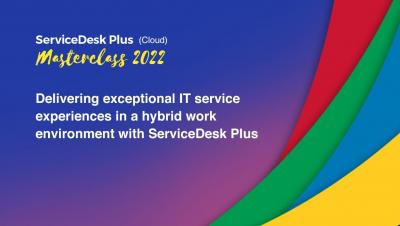Operations | Monitoring | ITSM | DevOps | Cloud
ManageEngine
Revamp your backup strategy and redefine data security this World Backup Day!
Did you know that March 31 is World Backup Day? Who knew data backup was important enough to get its own day? I didn’t until recently, which may be the case for you as well, but that’s okay. It is never too late to learn about the importance of security practices like backing up data and establishing a routine that includes said practices.
A practical approach to Active Directory Domain Services, Part 2: Active Directory and the Domain Name System
For readers who have returned to this blog after understanding the basics of Active Directory (AD) in part 1 of this series, welcome back! For all new readers: Hello! Get ready to jump into the world of AD. It would be good to take a quick peek at what was covered in part 1 before you continue. Be sure to read through part 1 as it will be your guide to: Part 2 of this series aims to introduce the interrelation of AD with the Domain Name System (DNS).
The growing interoperability between workspace management and ITSM
As economies gradually open up, it is becoming clearer that the hybrid work model is here to stay for increasingly more organizations. This has increased the need for cross-departmental collaboration between IT and the facilities team. During pre-pandemic times, IT teams in several organizations relied on the facilities team to maintain the upkeep of workplace assets such as printers, projectors, and monitors.
Say goodbye to client network outages caused by configuration mishaps
Network downtime opens the gates to productivity loss and customer attrition and can affect business growth moderately or even severely. Usually, the reasons behind a network outage are the following: Errors in network endpoints: Things like a network bottleneck or a spike in temperature can interrupt a client’s network operations and then snowball into an outage. Operational slip-ups: According to research done by Uptime Institute, 70% of data center and service downtime is due to human error.
A practical approach to Active Directory Domain Services, Part 1: A beginner's guide to Active Directory
Active Directory Domain Services (AD DS) is the traditional, on-premises domain service offered by Microsoft. It is the core component and a server role in Active Directory (AD), the specialized, proprietary directory service in Windows operating system environments. Consider an enterprise or a complex business set up with many connected network resources. In order to ensure the effective management of these resources, IT administrators use AD and its components, including AD DS.
That is our promise to you #ManageEngineTurns20
4 compelling reasons why you need a network discovery tool and 5 ways OpManager helps
Businesses now scale exponentially and so do their networks. Managing a hybrid IT environment that comprises wired, wireless, and virtual networks can be a challenging task for network administrators. However, continuous monitoring of these devices for fault and performance is crucial. Network discovery is key to successful monitoring solutions.
Simplifying ESX monitoring with OpManager
Five worthy reads: Private 5G-Your fastest way to successful digital transformation
Five worthy reads is a regular column on five noteworthy items we’ve discovered while researching trending and timeless topics. This week, we explore how Private 5G is impacting organizations worldwide. Digital transformation (DX) integrates digital technology into different areas of an organization to help change the way it operates and deliver value to its customers. Organizations that offer a higher value to their customers gain a competitive advantage over others in the marketplace.











